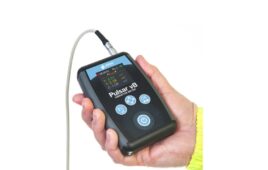Molex introduced an accelerometer-based Road Noise Cancelling (RNC) sensor, the first product in a new family of automotive Active Noise Cancellation (ANC) sensors. These sensors will play a critical role in combatting unwanted road, wind and HVAC car noise while reducing low-frequency sounds that increase driver fatigue.
Advancements in the electronics industry have enabled ANC technology, more commonly associated with high-end headphones, to transform how car manufacturers address road-based noises. Instead of installing expensive and heavy sound-absorbing materials to insulate car interiors from excessive road noise, ANC sensors are designed to be installed on a car’s chassis for more accurate and efficient results. Devices mounted to wheel wells and car frames, however, must be built to withstand the harshest conditions.
According to Molex’s recently commissioned “The Future of Automotive Survey,” nine in 10 new cars in 2030 will be hybrid or fully electric. In fact, respondents ranked electrification, connectivity and sensor technology among the most important innovations. They also cited the need for electronics and software to operate in extreme scenarios as a barrier to innovation.
Molex’s family of ANC accelerometer and microphone sensors use Analog Devices’ Automotive Audio Bus (A2B) technology to ensure delivery of high-fidelity audio while significantly reducing cabling complexity, costs and weight. By pairing its sensors with the A2B network, Molex transmits noise signals to the processing unit in less than two milliseconds. The sensors include integral connectors and are daisy chained to simplify integration while providing up to a 30% reduction in cable weight. Derived from Molex’s Mini50 Connector family, these connectors offer up to 50% space savings over traditional USCAR 0.64 connectors.
Moreover, Molex’s sensors are available in different housings, including an IP6K9K enclosure, to ensure greater protection from harsh conditions while enabling placement closest to the road noise. Detecting the sound at its source speeds processing of the noise-canceling signal; A2B technology also allows a higher number of signals per chain to be processed. Unlike other products on the market, Molex sensors are sensitive enough to measure and cancel road noise at slower vehicle speeds, giving designers greater flexibility in sensor placement while simplifying engineering.
Molex also has tested and validated the use of its RNC sensor with Silentium’s “Active Acoustics” software, which removes up to 90% of unwanted noises across a broad band of frequencies (from 20Hz to 1kHz) to improve driver and occupant comfort, safety and wellbeing. In particular, the elimination of frequent humming or droning noises coming from roads and tires is critical to decreasing “highway hypnosis” and driver fatigue.
Filed Under: Sensor Tips




